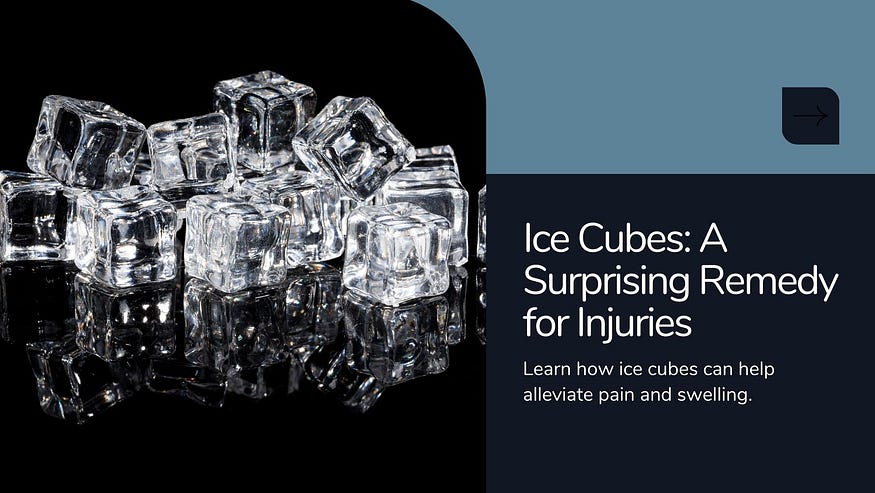To Ice or Not to Ice an Injury? A Beginner’s Guide

For decades, the RICE protocol (Rest, Ice, Compression, Elevation) has been the go-to approach for treating acute injuries. Icing, in particular, has been a mainstay in sports therapy. But recent research suggests a more nuanced approach might be necessary. So, should you reach for the ice pack or not? Let’s explore the science behind icing and alternative methods to promote healing.
When Does Icing Make Sense?
While icing may not be the miracle cure it was once thought to be, it can still play a role in managing certain injuries. Here are some situations where ice might be beneficial:
- Acute Injuries: In the immediate aftermath of a sprain, strain, or minor fracture, icing can help reduce swelling and pain. The cold temperature constricts blood vessels, minimizing fluid buildup and inflammation. This can be particularly helpful for injuries like a rolled ankle or a pulled muscle.
- Pain Relief: The numbing effect of ice can offer temporary pain relief. This can be valuable in the early stages of an injury when discomfort is most intense.
Key Points to Remember:
- Limited Timeframe: The benefit of icing is primarily seen in the first 24–72 hours following an injury. Prolonged icing can actually hinder healing by slowing down blood flow, which is crucial for delivering nutrients and oxygen to the injured area.
- Wrap it Up: Never apply ice directly to bare skin. Wrap the ice pack or a bag of frozen vegetables in a thin towel to prevent skin irritation or frostbite.
- 20 Minutes On, 20 Minutes Off: Apply ice for 20-minute intervals with 20-minute breaks in between. This allows for controlled cooling without compromising blood flow.
Beyond the Ice Pack: Alternative Therapies
While icing can be helpful in specific situations, it’s not a one-size-fits-all solution. Here are some alternative therapies that can promote healing and recovery:
- Compression: Wrapping the injured area with a bandage or compression sleeve can help minimize swelling and provide support.
- Elevation: Elevating the injured limb above the heart helps reduce fluid accumulation and promotes drainage.
- Movement: While complete rest might seem intuitive, early movement is crucial for long-term recovery. Gentle exercises recommended by a physiotherapist can help maintain mobility and prevent stiffness.
- Heat Therapy: Once the initial inflammation subsides, heat therapy can become a valuable tool. Heat increases blood flow to the injured area, promoting tissue repair and reducing muscle stiffness.
The Importance of Physiotherapy
Regardless of whether you choose to ice or not, physiotherapy can play a vital role in your recovery journey. Physiotherapists are movement specialists trained to assess your injury, develop a personalized treatment plan, and guide you through exercises to regain strength, flexibility, and function.
Golden Maple Physiotherapy in Canada offers a team of experienced physiotherapists who can help you manage your injury effectively. Through a combination of manual therapy, therapeutic exercises, and education, they can help you heal faster and prevent future injuries.
When to See a Physiotherapist
If you experience any of the following following an injury, it’s crucial to seek professional help from a physiotherapist:
- Persistent pain or swelling
- Difficulty moving the injured joint
- Deformity or instability in the injured area
- Numbness or tingling
Early intervention by a physiotherapist can significantly improve your recovery outcomes and help you get back to your favorite activities as quickly and safely as possible.
Conclusion: Making Informed Decisions
The decision to ice or not to ice an injury is no longer a simple one. While ice can offer temporary pain relief and reduce swelling in specific situations, it’s not a magic bullet. Physiotherapy can help you create a comprehensive recovery plan that addresses your unique needs and promotes long-term healing.

Comments
Post a Comment